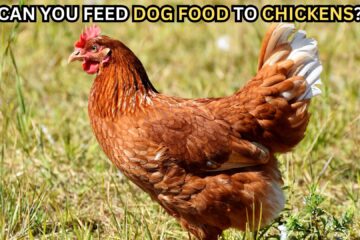As pet owners, our furry companions’ health and well-being are always at the forefront of our minds.
When it comes to their diet, the question of which human foods are safe for them to consume is a common concern.
Butternut squash, a nutrient-rich winter vegetable, has gained popularity not only as a healthy staple in human diets but also as a potential treat for dogs.
But can dogs eat butternut squash safely? And if so, in what forms?

This article dives into the safety and health benefits of feeding your dog butternut squash, covering various preparations such as raw, cooked, and pureed forms.
By understanding the nutritional benefits and how to properly introduce this vegetable into your dog’s diet, you can make informed decisions that contribute to their overall health and happiness.
The Nutritional Benefits of Butternut Squash for Dogs
Butternut squash is more than just a tasty and versatile vegetable; it’s also packed with a plethora of nutritional benefits that can be advantageous for your dog.
Rich in vital vitamins such as A, C, and E, butternut squash is an excellent source of nutrients that support vision, immune system health, and skin health.
Additionally, this vegetable is high in minerals like potassium, which is essential for maintaining a healthy heart and muscles.
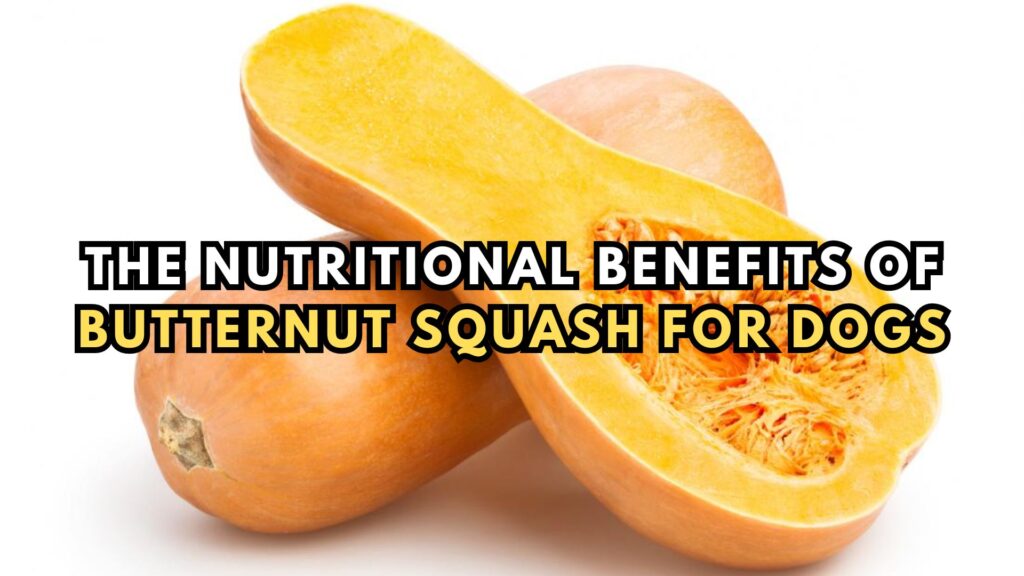
One of the most significant benefits of butternut squash for dogs is its high dietary fiber content.
Fiber is crucial for promoting a healthy digestive system, aiding in regular bowel movements, and can be particularly beneficial for dogs with sensitive stomachs or those prone to digestive issues.
Furthermore, butternut squash is low in calories and fat, making it an ideal treat for maintaining a healthy weight in dogs.
Incorporating butternut squash into your dog’s diet can provide these nutritional benefits, contributing to their overall well-being.
However, it’s important to understand the best ways to prepare and serve butternut squash to ensure it’s safe for your dog to consume.
Whether you’re considering raw, cooked, or pureed butternut squash, the following sections will guide you through each preparation method to help you safely introduce this nutritious vegetable into your dog’s diet.
Can Dogs Eat Butternut Squash Raw?
Feeding raw foods to dogs is a topic that often comes with questions and concerns. When it comes to butternut squash, raw consumption is generally considered safe for dogs, but with some important caveats.

The safety and digestibility of raw butternut squash for dogs largely depend on the preparation and the individual dog’s digestive system.
Safety and Digestibility:
Raw butternut squash is non-toxic to dogs and can be a healthy snack in moderation. However, its hard, fibrous texture can be difficult for some dogs to chew and digest.
To minimize the risk of choking and ensure easier digestion, it’s crucial to cut the butternut squash into small, manageable pieces.
Removing the skin and seeds is also recommended, as these parts can be especially tough and potentially hazardous.
Considerations for Feeding Raw Butternut Squash:
- Size and Quantity: Start with small amounts to see how your dog reacts. A few small pieces are usually sufficient for a taste test.
- Dog’s Size and Dietary Needs: Consider the size of your dog and any specific dietary restrictions or sensitivities they may have.
Can Dogs Eat Cooked Butternut Squash?
Cooked butternut squash is a fantastic addition to a dog’s diet. Cooking the squash softens its texture, making it easier for dogs to chew and digest.
This method of preparation can enhance the vegetable’s natural sweetness, making it more appealing to some dogs.

Benefits of Feeding Dogs Cooked Butternut Squash:
- Enhanced Digestibility: Cooking breaks down the squash’s fibers, making it gentler on your dog’s digestive system.
- Increased Nutrient Availability: Some nutrients in butternut squash become more accessible to dogs after cooking, aiding in their overall nutrition.
- Versatility in Recipes: Cooked butternut squash can be mashed, pureed, or mixed into your dog’s regular food, offering a variety of ways to incorporate this healthy vegetable into their diet.
Tips on How to Properly Cook Butternut Squash for Dogs:
- Keep It Plain: Avoid adding salt, sugar, or seasonings that can be harmful to dogs.
- Cooking Methods: Steaming or roasting are excellent ways to cook butternut squash. These methods preserve the nutrients while making the squash soft and digestible.
- Serving Suggestions: Once cooked and cooled, you can serve the butternut squash alone or mix it with your dog’s regular food. As with raw squash, start with small amounts to ensure it agrees with your dog’s stomach.
Both raw and cooked butternut squash can be healthy, nutritious treats for dogs, provided they are prepared correctly and served in moderation.
Always observe your dog after introducing new foods into their diet and consult with a veterinarian if you have concerns about their dietary needs or if they show signs of digestive distress.
The Risks of Butternut Squash Skin and Seeds for Dogs
While the flesh of butternut squash is safe and healthy for dogs, the skin and seeds pose certain risks that pet owners should be aware of.
These parts of the squash can be difficult for dogs to digest and may lead to intestinal blockages or other digestive issues.
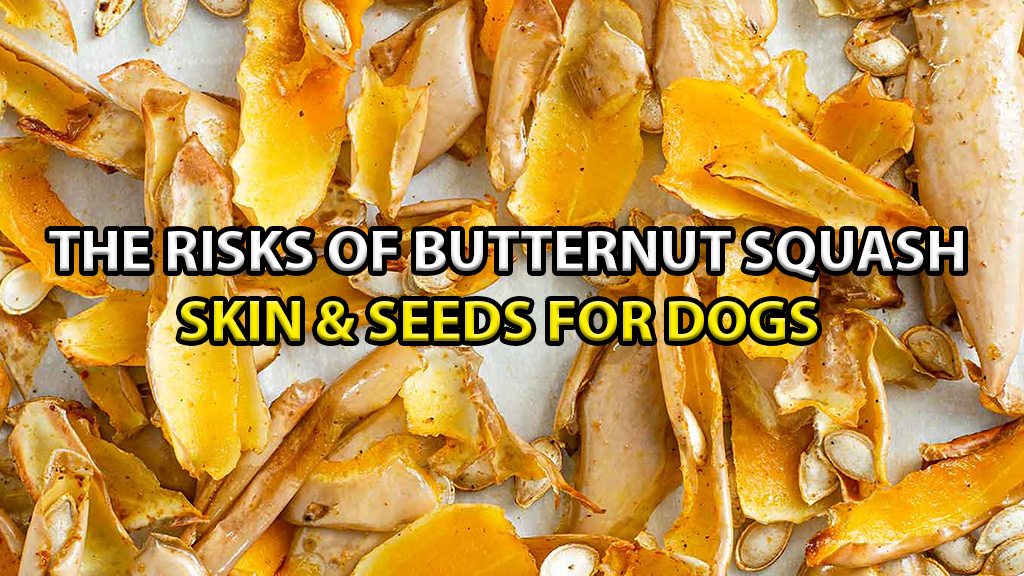
Potential Hazards:
- Choking Risk: The hard, fibrous texture of the skin and the size of the seeds can pose a choking hazard to dogs.
- Digestive Blockages: If swallowed, the tough skin and seeds can become lodged in the gastrointestinal tract, leading to blockages that may require surgical intervention.
- Gastrointestinal Upset: Even if they don’t cause a blockage, the skin and seeds can irritate a dog’s digestive system, leading to symptoms like vomiting or diarrhea.
Safety Tips and Preventive Measures:
- Remove Skin and Seeds: Before offering butternut squash to your dog, always peel it and remove the seeds.
- Monitor Your Dog: Watch for any signs of digestive distress after feeding butternut squash for the first time.
- Consult Your Vet: If you have any concerns about introducing new foods into your dog’s diet, it’s best to consult with a veterinarian.
Can Dogs Eat Butternut Squash Soup?
Butternut squash soup can be a tasty and warming treat for dogs, but it’s crucial to consider the ingredients used in the recipe.
Many soups designed for human consumption contain ingredients that are not suitable for dogs.
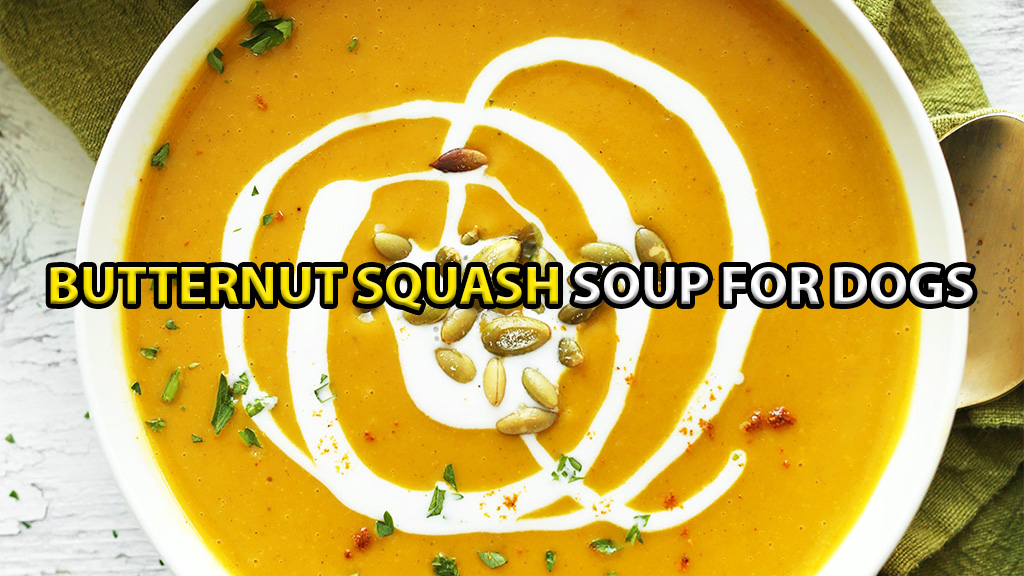
Analyzing Common Ingredients:
- Onions and Garlic: These are toxic to dogs and commonly found in soups. Even small amounts can lead to toxicity.
- Salt and Seasonings: High levels of salt and certain seasonings (like nutmeg, which is toxic to dogs) can be harmful.
- Cream and Dairy: Some dogs are lactose intolerant, and dairy can cause digestive issues.
Recommendations for Dog-Friendly Soup Recipes:
- Keep It Simple: Use plain cooked butternut squash, water, and maybe a little chicken or vegetable broth (ensure it’s low sodium and onion/garlic-free).
- Homemade is Best: Making your own butternut squash soup allows you to control the ingredients, ensuring it’s safe for your dog.
- Serving Size: As with any treat, butternut squash soup should be given in moderation, alongside your dog’s regular diet.
When introducing new foods like butternut squash (in any form) to your dog’s diet, moderation is key.
Always tailor portions to your dog’s size, dietary needs, and any existing health issues, and observe their reaction to the food. Ensuring the safe preparation and serving of butternut squash can make it a beneficial addition to your dog’s diet.
Can Dogs Eat Butternut Squash Peel?
The peel of butternut squash, while not toxic to dogs, can be tough for them to digest. Its hard, fibrous nature poses a risk for causing intestinal discomfort or blockages, particularly in smaller dogs or those with sensitive digestive systems.
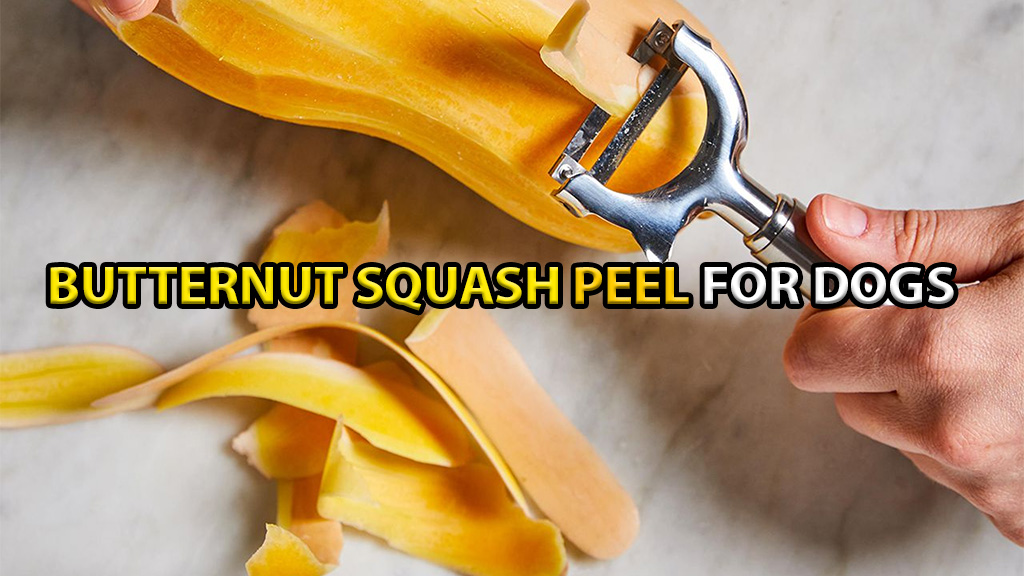
Safety Conditions:
- Preparation: If choosing to feed your dog butternut squash peel, it’s crucial to cut it into very small, manageable pieces to reduce the risk of choking or digestive issues.
- Moderation: Only offer a small quantity of peel as a rare treat, not a regular part of their diet.
- Observe: Watch your dog closely for any signs of digestive distress after consuming the peel and discontinue if any adverse effects are noticed.
Butternut Squash Puree: A Safe Option for Dogs?
Butternut squash puree can be a fantastic way to add this nutritious vegetable to your dog’s diet. It’s easily digestible, and most dogs enjoy the taste.
Preparation:
- Cooking: Start by peeling and seeding the squash, then cut it into cubes. Cook these pieces by boiling, steaming, or roasting until soft.
- Pureeing: Once cooked and cooled, blend the squash into a smooth puree. Avoid adding any seasonings, salt, or sugar.
Serving Size and Frequency:
- Serving Size: A good rule of thumb is to offer no more than a tablespoon of puree per 10 pounds of your dog’s body weight per day.
- Frequency: Introduce butternut squash puree slowly into their diet, starting with small amounts and gradually increasing if there are no adverse effects.
Incorporating Butternut Squash into Your Dog’s Diet
Butternut squash can be included in your dog’s diet in several creative ways, adding variety and nutritional benefits.
Creative Ways to Include Butternut Squash:
- Mixed with Regular Food: Stir some butternut squash puree into your dog’s regular meals to enhance flavor and nutrition.
- Frozen Treats: Freeze butternut squash puree in ice cube trays for a refreshing and healthy treat.
- Dehydrated Squash Chips: Thinly slice butternut squash and dehydrate the pieces to make chewy or crispy treats.
Importance of Introducing New Foods Slowly:
- Monitor for Allergies: Introducing new foods one at a time allows you to monitor for any allergic reactions or digestive issues.
- Digestive Health: Gradual introduction helps prevent gastrointestinal upset, ensuring your dog’s digestive system can adjust to the new food.
By following these guidelines, you can safely introduce butternut squash into your dog’s diet, providing them with a delicious and nutritious snack that supports their overall health.
Remember, while butternut squash can be a healthy addition, it should not replace a balanced diet tailored to your dog’s specific nutritional needs.
FAQs
How much butternut squash can I give my dog?
The appropriate amount of butternut squash for your dog depends on their size, dietary needs, and overall health. As a general guideline, butternut squash should not make up more than 10% of your dog’s daily calorie intake.
Start with small servings, such as a tablespoon for smaller dogs or a quarter cup for larger breeds, and adjust based on their reaction.
Are there any dogs that should avoid butternut squash?
While butternut squash is safe for most dogs, those with specific health conditions, such as diabetes, should consume it cautiously due to its natural sugars.
Always consult with your vet before introducing new foods into your dog’s diet, especially if they have existing health issues.
Can butternut squash help with my dog’s digestion?
Yes, butternut squash is high in dietary fiber, which can aid in digestion and help regulate bowel movements. It’s a good option for dogs with mild digestive issues, as it can promote a healthy gut.
However, it’s important to introduce it slowly to avoid causing any digestive upset.
How do I know if my dog is allergic to butternut squash?
A: Allergic reactions to butternut squash in dogs are rare, but they can occur. Symptoms may include itching, swelling, digestive upset, or difficulty breathing.
If you notice any of these signs after introducing butternut squash, discontinue its use and consult your veterinarian immediately.
Conclusion
In conclusion, butternut squash can be a nutritious and tasty addition to your dog’s diet when prepared and served correctly. It offers numerous health benefits, including vitamins, minerals, and fiber, which can support your dog’s digestion and overall well-being.
Whether served raw, cooked, or as a puree, it’s important to ensure that the squash is prepared without any added seasonings, sugars, or fats that could be harmful to your pet.
Moderation is key when introducing any new food into your dog’s diet, including butternut squash. Start with small amounts and observe your dog’s reaction before making it a regular part of their diet.
Additionally, always consult with your veterinarian before introducing new foods, especially if your dog has existing health conditions or dietary restrictions.
Feeding your dog butternut squash can be a wonderful way to add variety and essential nutrients to their diet. By following the guidelines and recommendations provided, you can safely incorporate this healthy vegetable into your dog’s meals, contributing to their happiness and health.


